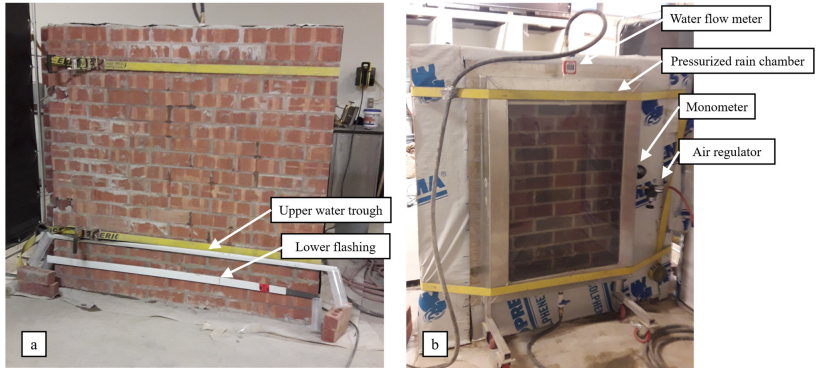Mohsen Khanverdi and Sreekanta Das
i PhD Student, University of Windsor, Windsor, Canada, khanver@uwindsor.ca
ii Professor, University of Windsor, Windsor, Canada, sdas@uwindsor.ca
ABSTRACT
Masonry is a widely used construction method globally, with building facades being particularly vulnerable to wind-driven rain that combines rainwater and wind pressure. Driving rain is the primary moisture source in buildings, leading to significant damage such as moisture transfer, mold growth, discoloration, erosion, and structural degradation. The effects of driving rain are intensified by climate change, highlighting the need for realistic evaluations under various climatic conditions. Existing studies have explored masonry wall behavior under wind-driven rain, focusing on material properties, rain load, and air pressure effects. There is a gap in the literature regarding the behavior of masonry veneers under cyclic wind-driven rain conditions with varying drying time intervals. This study addresses this gap by experimentally investigating water penetration in large-scale masonry veneers constructed with clay bricks and mortar. The research evaluates the impact of wetting-drying cycles on the performance of these veneers. The findings reveal that total water leakage under cyclic wind-driven rain conditions can increase by more than 85% compared to the reference test. This significant increase highlights the need to account for frequent rain exposure in the design of masonry members, rather than relying on designs intended only for occasional rain events.
KEYWORDS: clay brick, experimental study, masonry veneers, water penetration, wind-driven rain.
037-Khanverdi.pdf



